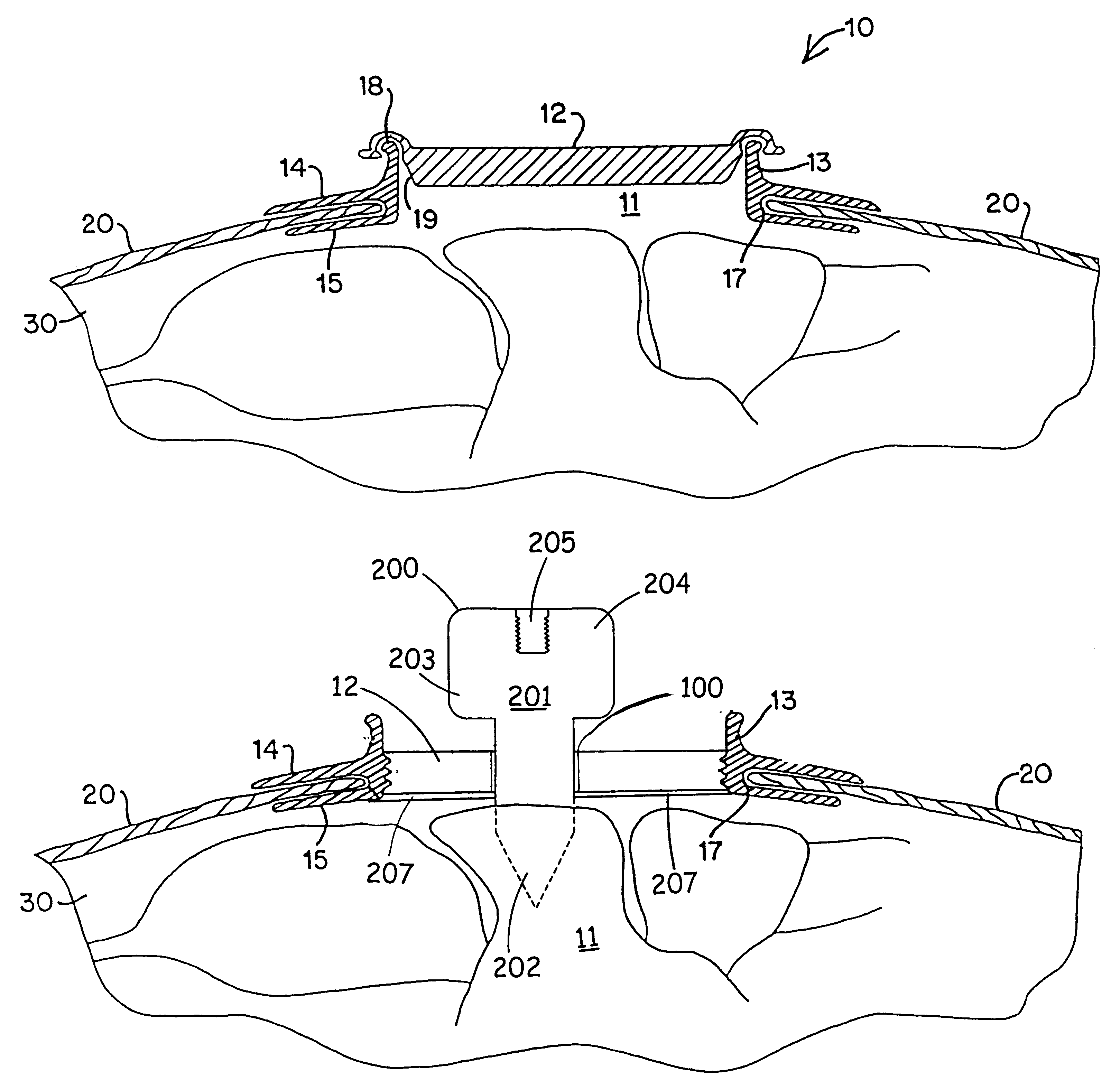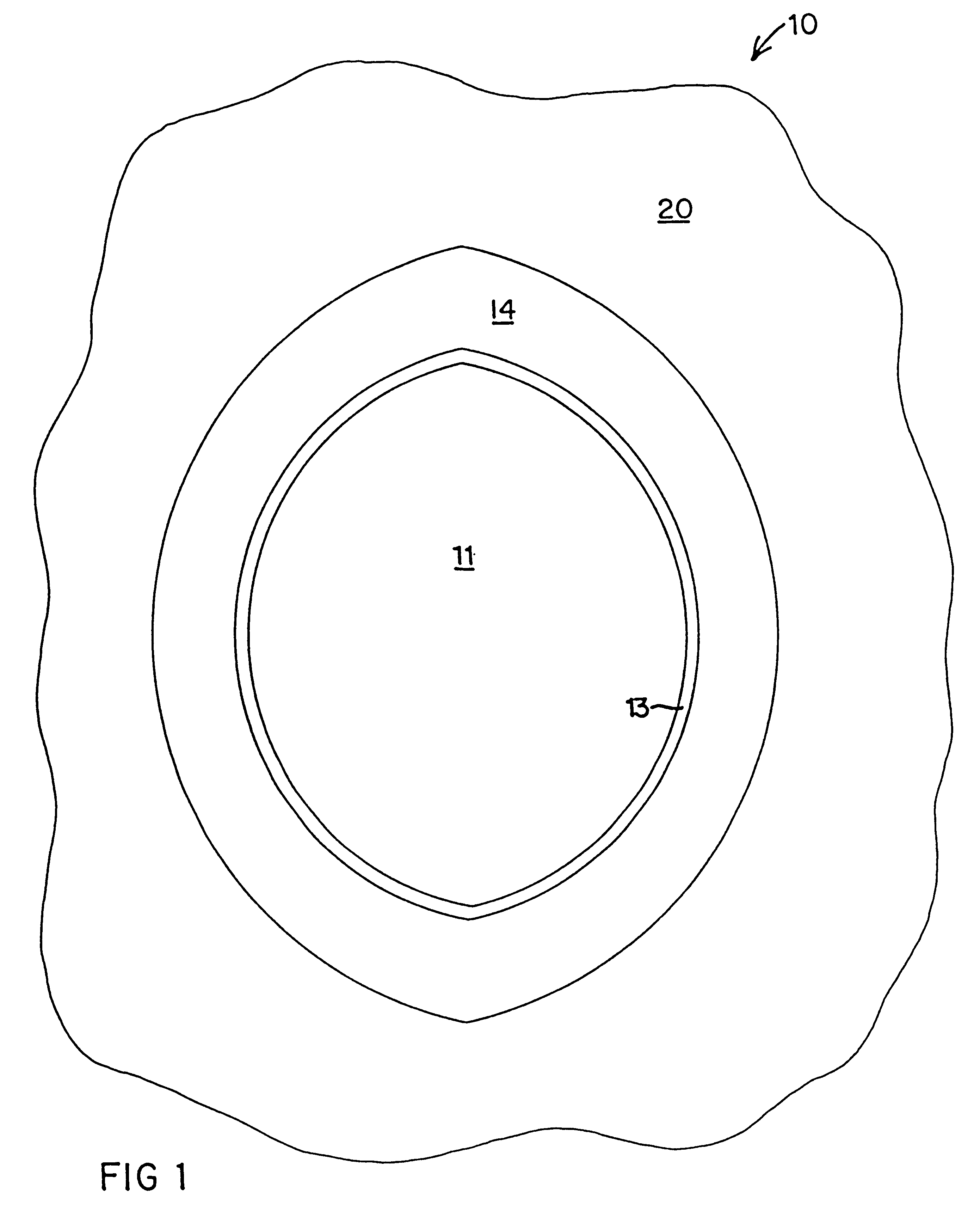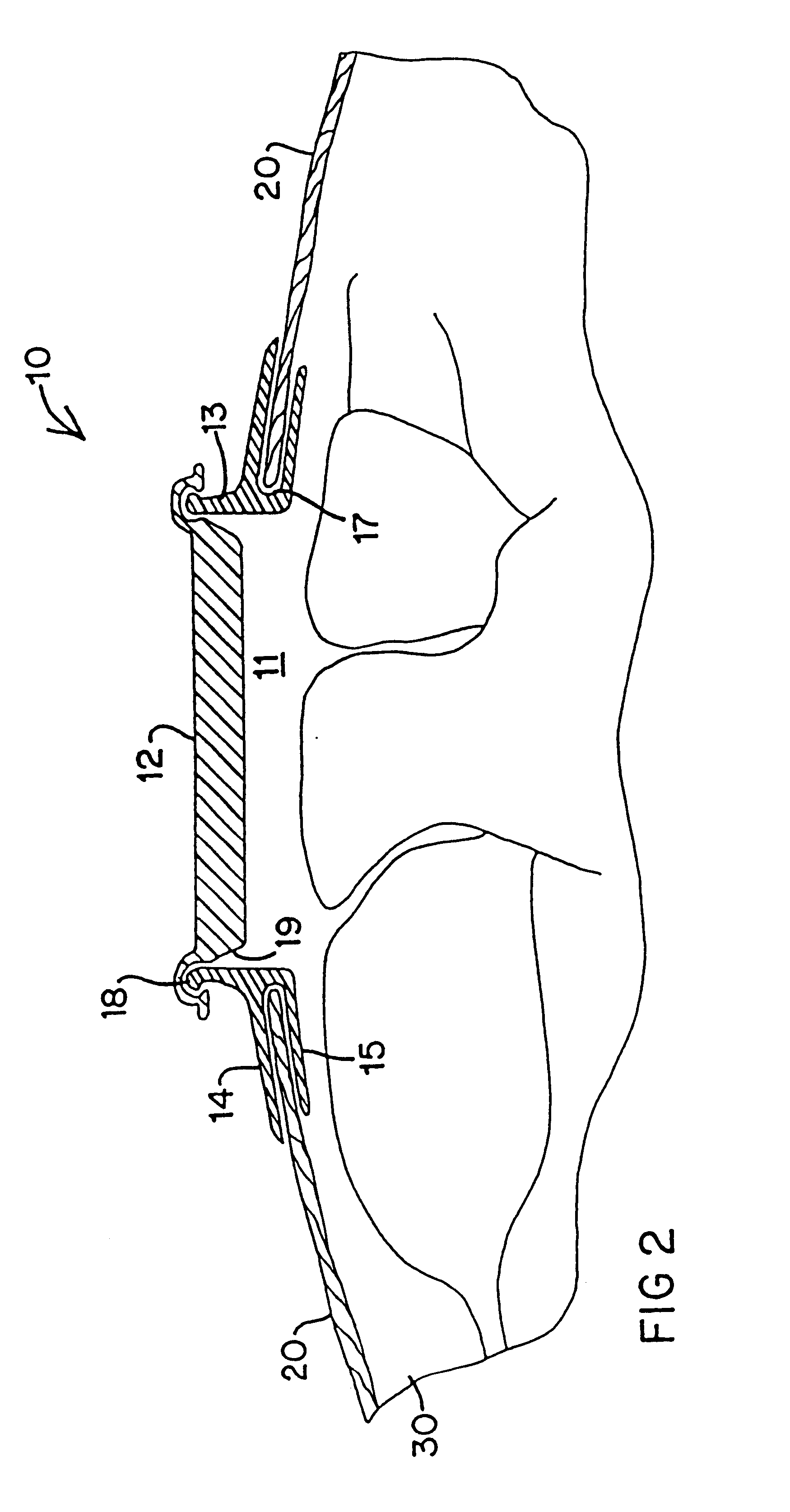Modified trocar and methods of use
a trocar and modified technology, applied in the field of surgical operating system, can solve the problems of prolonged hospitalization, traumatic and painful recovery, and incisions as long as 20 centimeters, and achieve the effect of prolonging the hospitalization period, and reducing the risk of infection
- Summary
- Abstract
- Description
- Claims
- Application Information
AI Technical Summary
Problems solved by technology
Method used
Image
Examples
Embodiment Construction
The present invention includes a multi-function port device that permits a surgeon the flexibility to perform tactile surgery, endoscopic surgery, or video-assisted surgery, all through the same incision, if desired. The use of the device leads to novel surgical techniques. The multi-function port device is a sealing ring 10, illustrated in FIG. 1, that acts to isolate a body wall 20 from surgical procedures carried out within a body cavity 30, as illustrated in FIGS. 2-3. The sealing ring 10 is designed to permit easy access of an instrument tube 101, as shown in FIG. 4, or a surgeon's hand or fingers 102, as shown in FIG. 5, into the body cavity 30. An optional component of the present invention is a surgical glove 40, shown in FIG. 6, that may be used so that a surgeon can have direct physical contact with the contents of the body cavity 30. In addition, the surgical glove 40 may include one or more accessory regions 41 for delivering surgical instruments to the surgeon's fingert...
PUM
 Login to View More
Login to View More Abstract
Description
Claims
Application Information
 Login to View More
Login to View More - R&D
- Intellectual Property
- Life Sciences
- Materials
- Tech Scout
- Unparalleled Data Quality
- Higher Quality Content
- 60% Fewer Hallucinations
Browse by: Latest US Patents, China's latest patents, Technical Efficacy Thesaurus, Application Domain, Technology Topic, Popular Technical Reports.
© 2025 PatSnap. All rights reserved.Legal|Privacy policy|Modern Slavery Act Transparency Statement|Sitemap|About US| Contact US: help@patsnap.com



